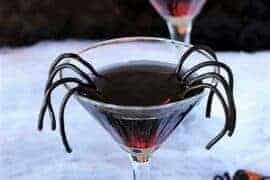Hello, Creative Parents!
Welcome to a brightly colored, fluffy cloud of imagination where shaving cream meets paint and fun takes flight! In this delightful guide, we’re going to explore the whimsical world of using shaving cream and paint for crafting super fun art projects with your little ones. Get ready to roll up your sleeves, giggle, and create memories alongside messes that are totally worth it! ?
Why Shaving Cream and Paint Is a Win-Win for Kids
The mixture of shaving cream and paint isn’t just about creating colorful art—it’s a fantastic way to engage in sensory play. Sensory play is crucial for children’s development as it helps build nerve connections in the brain, encourages the development of fine motor skills, and can even support language development. Plus, it’s a sheer joy to touch, see, and smell!
Choosing the Right Materials
Before we dive into the how-to, let’s make sure we have the right kind of shaving cream and paint. It’s super important to find products that are safe for kids’ skin and non-toxic. Most shaving creams are safe for skin (they’re designed for sensitive facial skin, after all!), but always check the labels. For paint, water-based or tempera paints are your best bet for easy clean-up and safety.
Getting Set Up for a Shaving Cream Art Session
Now, let’s set the stage for an epic art adventure with shaving cream and paint! Here’s what you’ll need:
- A large, washable surface or a tray to contain the mess
- Shaving cream (the standard foam kind works great)
- Water-based or tempera paints
- Spreading tools like a spatula or popsicle sticks
- Paper or cardstock to make art on
- Smocks or old clothes to protect your little artists’ outfits
And don’t forget to lay down some newspaper or a drop cloth—just in case things get a bit wild! ??
Safety First!
While we’re all about fun, safety is our top priority. Ensure that children are always supervised during craft time, especially when they’re handling paint and other art supplies. It’s also a good time to remind our kiddos not to put any materials in their mouths—this art project is for eyes and hands only!
Once you’ve prepped your workspace and donned your smocks, it’s time to jump into action! In the next part of this guide, we’ll explore some fantastical activities you can do with shaving cream and paint where imagination meets the canvas, and playtime is bursting with learning opportunities. Are you as excited as we are? Let’s make a splash in the fabulous world of sensory art!

5 Essential Preparations for Shaving Cream and Paint Crafts
Before your children dive hands-first into the colorful world of shaving cream and paint, there are some key preparations you should be aware of. Here’s what you need to know to set the stage for success and giggles:
- Allergy Check – Ensure that neither the shaving cream nor paints contain allergens that may affect your child. A quick skin test before starting the activity can prevent any potential reactions.
- Ventilation Is Vital – Crafting with paints and shaving cream can create fumes, so be sure to work in a well-ventilated area or near an open window to keep the air fresh and safe.
- Embrace the Mess, Plan to Clean – While mess is part of the fun, having cleaning supplies at arm’s reach makes the aftermath a breeze. Keep a stack of wet wipes, a bowl of water, and towels handy.
- Experiment First – Before introducing the activity to your child, do a little experimentation on your own. This will help you understand the behavior of the cream and paint mixture and offer guidance during the craft.
- Capture the Process, Not Just the Product – Remember, the focus should be on the experience, not just the final artwork. Have your camera ready to capture those in-the-moment smiles and splatters that make precious memories!
Once you’ve ticked these five boxes, you’re all set to bring on the fluff and color. With a little prep, you’re about to discover just how rewarding and hilarious crafting with your kiddos can be!
Prepare for laughter, prepare for splashes of color, and prepare for one of the best sensory crafting experiences out there. It’s almost time to let those little fingers make big art! So, let’s put on those art smocks, line up the colors, and fluff up that shaving cream—it’s showtime, superstar crafters!
With this guide, you’re now armed with all the knowledge needed for a successful and joy-filled shaving cream and paint craft day. You’ve learned the benefits of sensory play, how to select child-friendly materials, and the importance of having a well-prepared workspace. Safety has been underscored, and we’ve highlighted the importance of supervision and non-toxic materials for peace of mind.
Going beyond the basics, you’ve got insider tips on crafting strategies and how to embrace the process itself. You’re not just providing your children with fun activities—you’re fostering creativity, nurturing cognitive growth, and building those oh-so-important fine motor skills.
As you embark on these colorful adventures, remember that each swirl of paint and peak of shaving cream holds the potential for growth, learning, and, most importantly, laughter. Your dedication to preparing and participating in these art projects paves the way for invaluable family memories and developmental leaps for your little ones.
So, give yourself a pat on the back, dear parent, for you’re about to embark on a journey that’s as rewarding for you as it is exhilarating for your child. Shaving cream and paint await—let your kiddo’s creativity soar and watch as their little hands create magic, one craft session at a time!
Remember, the magic of childhood is fleeting, but the moments you create together with shaving cream and paint will grow into a gallery of joyful memories that will last a lifetime. The mess can be cleaned, but the joy of these creative sessions will always remain brightly colored in the canvas of your child’s memory. Let’s make each squish, swirl, and giggle count!
See more great Things to Do with Kids in New Zealand here. For more information see here
Disclaimer
The articles available via our website provide general information only and we strongly urge readers to exercise caution and conduct their own thorough research and fact-checking. The information presented should not be taken as absolute truth, and, to the maximum extent permitted by law, we will not be held liable for any inaccuracies or errors in the content. It is essential for individuals to independently verify and validate the information before making any decisions or taking any actions based on the articles.




